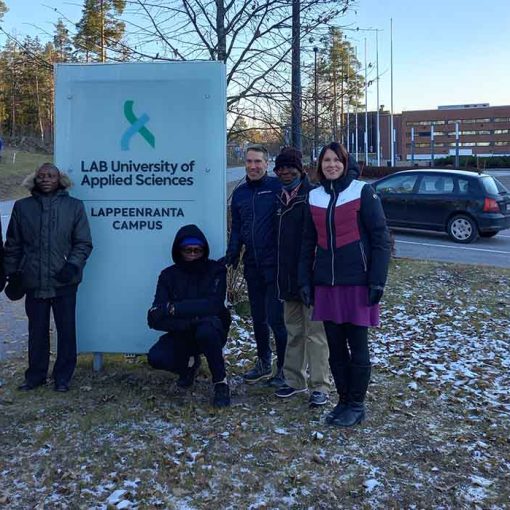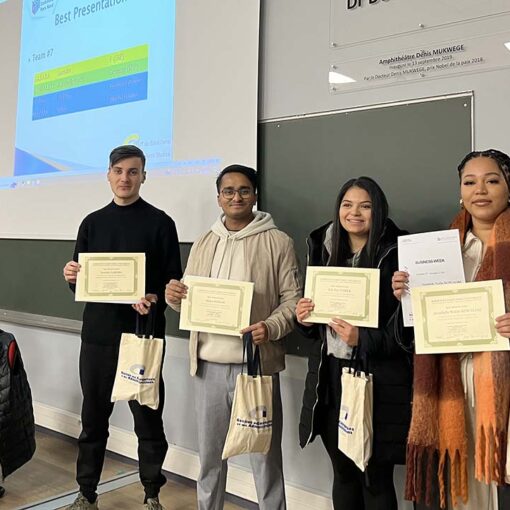Recent events, such as COVID-19, the war in Ukraine, and the need for accelerated measures to counter global warming, have determined changes from individual to business levels. The events industry was one of the most affected industries that had to adopt short-term changes and reinvent itself.
Dantis (2023) studies in her Master’s thesis different alternatives and solutions for videoconferences and virtual events.
Due to the late world events, in-person activities took only a short time to move to an online space. In the future, videoconferences, as a significant part of virtual events, will become more common (Meyer et al. 2021, 9; Gupta et al. 2022; Son et al. 2022), though the level and depth will depend on various factors, such as financial resources, institutional policies, health crises, geopolitics, or natural phenomena.
The majority of videoconferencing software uses audio and slideshow technologies. The two-dimensional nature of virtual events makes the attendance experience less real. (Ton & Do 2022, 279.) This is because an individual’s brain cannot evoke experiences through multisensory channels, from seeing (sight), hearing (sound), sensing (smell), tasting (taste), and touching (touch). According to academics and practitioners, a five-sensory approach becomes vital to event design as it enhances the experience. (Ton & Do 2022, 285.)
Holograms as a solution
One solution could be holograms, which can be utilised to provide immersive experiences that keep audiences’ attention. Holographic displays produce a sense of presence that goes beyond what is conceivable with conventional visual media because of their depth and realism. They may be seen from several perspectives, giving the viewer a feeling of depth and perspective and adding to the impression that they are true. Through touching or gesturing, viewers can interact with holographic images or objects. (Howard 2023.)
Baltezarevic (2023) expects that technology development will enable users to touch 3D holograms without using other haptic devices. These holograms will be capable of emitting the pressure of ultrasonic radiation, creating resistance when users interact with them, thus artificially stimulating the human sense of touch.

Multisensory tools of the future
Eventually, users can control the airflow temperature to feel hologram objects’ heat (or cold). Furthermore, the airflow can also be scented, allowing users to smell holograms. As a result, the sensory experience of engaging with virtual objects would be very similar to the real-life experience. (Baltezarevic & Baltezarevic 2023, 787.)
Devices for smells with a small and portable virtual reality interface have already been created. They can quickly generate odours in a localised area and connect them wirelessly to virtual reality for an immersive and more realistic experience. Researchers expect the transmission of odorous messages to be an alternative communication method to improve virtual user interaction. (Contescu 2023.)
Immersive experiences will be powered by tools that can stimulate participants’ senses. According to Dantis´ (2023) study respondents, holograms and multisensorial elements have been identified as effective tools to use along with artificial intelligence augmented or virtual reality facilities when designing videoconferences. All of these will facilitate enhanced experiences.
Authors
Carmen Dantis graduated in autumn 2023 with Master’s programme in Business Administration, International Tourism and Event Management at LAB university of Applied Sciences.
Johanna Heinonen is a Senior Lecturer and RDI Specialist at LAB University of Applied Sciences. She is particularly passionate about studying how digital tools and applications could be used more efficiently.
References
Baltezarevic, R. 2023. Hologram Marketing. Conference: 4. International Dicle scientific research and innovation congress. Cited 31 Aug 2023. Limited availability at https://www.researchgate.net/publication/370464475_HOLOGRAM_MARKETING
Baltezarevic, R. & Baltezarevic, I. 2023. Benefits Of Using Holograms In Marketing Communication Summary. International Izmir Economics Congress. 784–791.
Contescu, D. 2023. Mirosirea parfumurilor va fi posibila si de la distanta: oamenii vor putea savura pana la 30 de parfumuri diferite folosind realitatea virtuala. Mediafax. Cited 28 Aug 2023. Available at https://www.mediafax.ro/social/mirosirea-parfumurilor-va-fi-posibila-si-de-la-distanta-oamenii-vor-putea-savura-pana-la-30-de-parfumuri-diferite-folosind-realitatea-virtuala-21871319
Dantis, C. 2023. Videoconferences in the future, shaped by the future ‒ A general overview of the virtual experience. Thesis, Master’s degree. LAB University of Applied Sciences. Cited 10 Nov 2023. Available at https://urn.fi/URN:NBN:fi:amk-2023111429366
Franz26. 2023. AI, luotu, median kulutus, media. Pixabay. Cited 6 Oct 2023. Available at https://pixabay.com/fi/illustrations/ai-luotu-median-kulutus-media-8248309/
Gupta, A., Chenatt, J.J., Singla, T., Rajput, D. & Gupta, S. 2022. Virtual Events in the Post-COVID-19 Pandemic Era in Medical Profession: A Narrative Review. Journal of Clinical and Diagnostic Research. Volume 16(5). 1–4.
Howard, M. 2023. Holograms Market Size Report, Share, Demand Analysis, Trends, Growth, Industry Forecast, 2023-2030. Cited 31 Aug 2023. Available at https://www.linkedin.com/pulse/holograms-market-size-report-share-demand-analysis-trends-howard/
Meyer, M.F., Ladwig, R., Dugan, H.A., Anderson, A., Bah, A.R., Boehrer, B., Borre, L., Chapina, R.J., Doyle, C., Favot, E.J., Flaim, G., Forsberg, P., Hanson, P.C., Ibelings, B.W., Isles, P., Lin, F.P., Lofton, D., Moore, T.N., Peel, S., Peters, J.A., Pierson, D., de Senerpont Domis, L.N., Schloss, J.A., Shikhani, M., Smagula, A.P., Stockwell, J.D., Thomas, P., Thomas, Q., Tietjen, T. & Weathers K.C. 2021. Virtual Growing Pains: Initial Lessons Learned from Organizing Virtual Workshops, Summits, Conferences, and Networking Events during a Global Pandemic. ASLO. Volume 30(1). 1–11.
Son, J., Sabio, J., Jain, A. & Ulijn, R.V. 2022. Ten Steps to Organize a Virtual Scientific Symposium and Engage Your Global Audience. Global Challenges. Volume 6(9).
Ton, H. N. N., & Do, Q. H. X. 2022. The Effectiveness of Virtual Events During Covid-19 Pandemics. Advances in Social Sciences Research Journal. Volume 9(7). 278–295.




